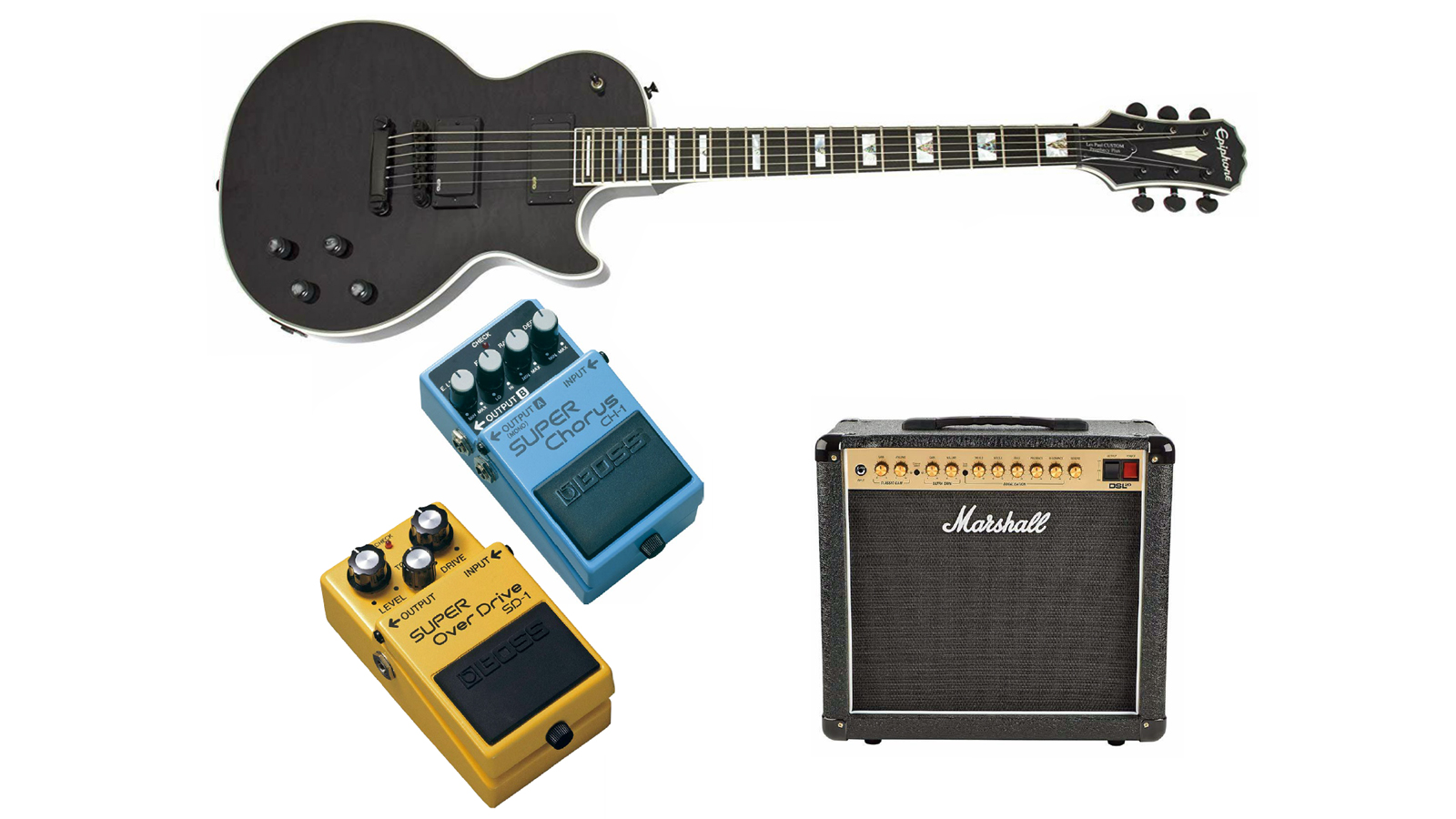The secrets behind Zakk Wylde's guitar tone on Ozzy Osbourne's No More Tears
Get to know the gear that shaped the 1991 album's title track

Ozzy Osbourne’s 1988 album, No Rest for the Wicked, may have introduced Zakk Wylde as the Prince of Darkness’s new guitarist, but his 1991 follow-up studio album, No More Tears, is the record that established Wylde as a bona fide guitar hero.
The title cut, which was released as the album’s first single, is an epic track that proved that Wylde had his own distinct voice and truly deserved to follow in the footsteps of his predecessors Tony Iommi, Randy Rhoads and Jake E. Lee.
During the early '90s, mammoth refrigerator-sized racks were all the rage with metal and hard rock guitarists, but Wylde relied on a much simpler, comparatively primitive rig to lay down his huge tones.
His main setup consisted of various Gibson Les Pauls with EMG 81 and 85 active humbucking pickups, four stompboxes - a Cry Baby wah, Jim Dunlop JH-4S Rotovibe expression pedal, Boss SD-1 Super Overdrive and Boss CH-1 Super Chorus - and a pair of Marshall JCM800 2203 100-watt amps, driven in stereo via the Boss chorus pedal’s outputs.
For No More Tears, he eschewed the wah and Rotovibe, using just the Boss pedals and Marshalls to generate the song’s bone-crushing crunch.
Several key elements of Wylde’s rhythm tones on the song include boosting the bass and treble almost all the way while still retaining a decent amount of midrange to provide ample definition and body for individual lines, the tighter attack and extended treble and bass response courtesy of the Marshalls’ 6550 tubes, heavy-gauge strings on the low E, A and D, and the extra output boost from the EMG pickups and Boss SD-1.
The chorus pedal remains on throughout the song as well, to provide extra body and just a hint of modulation. The delay effect at the end of Wylde’s solo was added during mixing using a digital delay unit.
All the latest guitar news, interviews, lessons, reviews, deals and more, direct to your inbox!
Get the sound, cheap!

- ESP LTD EC-256 electric guitar
- Marshall DSL20CR combo amp
- Boss SD-1 Super Overdrive
- Boss CH-1 Super Chorus
TONE TIP: Use the Marshall’s Ultra Gain (Red) channel but keep the Gain control relatively low, using the SD-1 to generate most of the distorted tone.
Zakk Wylde's original gear
GUITAR: 1981 Gibson Les Paul Custom with EMG 81 (bridge) and EMG 85 (neck) active humbucking pickups (bridge pickup), Volume: 10, Tone: 10
AMPS: Two late-'80s Marshall JCM800 2203 100-watt heads with 6550 tubes (Presence: 3, Bass: 10, Middle: 5, Treble: 9, Master Volume: 4, Preamp Volume: 10, High sensitivity input) into Marshall 1960B 4x12 cabinets with Celestion G12T-75 speakers
EFFECTS: Boss SD-1 Super Overdrive (Level: 6.5, Tone: 5, Drive: 6.5), Boss CH-1 Super Chorus (Effect Level: 8, EQ: 5, Rate: 6, Depth: 5) *CH-1 stereo outputs to individual heads
STRINGS/TUNING: GHS Boomers (.060, .052, .036, .017, .013, .010); C# , G# , C# , F# , A# , D#
PICK/SLIDE: Dunlop Tortex 1.14mm; chrome-plated brass
Chris is the co-author of Eruption - Conversations with Eddie Van Halen. He is a 40-year music industry veteran who started at Boardwalk Entertainment (Joan Jett, Night Ranger) and Roland US before becoming a guitar journalist in 1991. He has interviewed more than 600 artists, written more than 1,400 product reviews and contributed to Jeff Beck’s Beck 01: Hot Rods and Rock & Roll and Eric Clapton’s Six String Stories.

